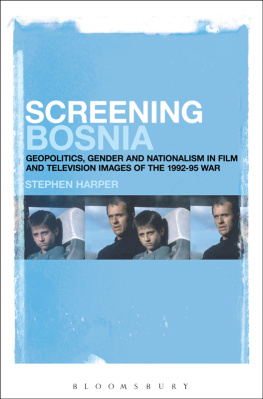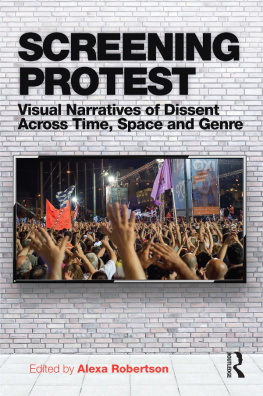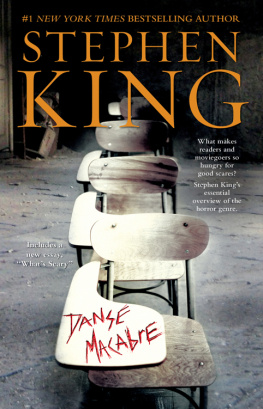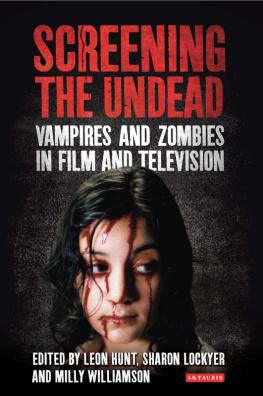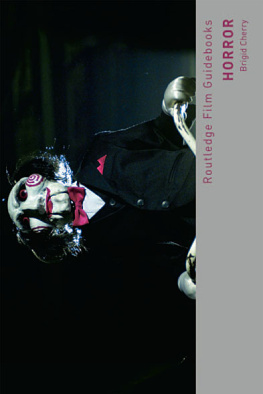Simon Brown - Screening Stephen King Adaptation and the Horror Genre in Film and Television
Here you can read online Simon Brown - Screening Stephen King Adaptation and the Horror Genre in Film and Television full text of the book (entire story) in english for free. Download pdf and epub, get meaning, cover and reviews about this ebook. year: 2018, publisher: University of Texas Press, genre: Art. Description of the work, (preface) as well as reviews are available. Best literature library LitArk.com created for fans of good reading and offers a wide selection of genres:
Romance novel
Science fiction
Adventure
Detective
Science
History
Home and family
Prose
Art
Politics
Computer
Non-fiction
Religion
Business
Children
Humor
Choose a favorite category and find really read worthwhile books. Enjoy immersion in the world of imagination, feel the emotions of the characters or learn something new for yourself, make an fascinating discovery.

- Book:Screening Stephen King Adaptation and the Horror Genre in Film and Television
- Author:
- Publisher:University of Texas Press
- Genre:
- Year:2018
- Rating:5 / 5
- Favourites:Add to favourites
- Your mark:
- 100
- 1
- 2
- 3
- 4
- 5
Screening Stephen King Adaptation and the Horror Genre in Film and Television: summary, description and annotation
We offer to read an annotation, description, summary or preface (depends on what the author of the book "Screening Stephen King Adaptation and the Horror Genre in Film and Television" wrote himself). If you haven't found the necessary information about the book — write in the comments, we will try to find it.
Simon Brown: author's other books
Who wrote Screening Stephen King Adaptation and the Horror Genre in Film and Television? Find out the surname, the name of the author of the book and a list of all author's works by series.
Screening Stephen King Adaptation and the Horror Genre in Film and Television — read online for free the complete book (whole text) full work
Below is the text of the book, divided by pages. System saving the place of the last page read, allows you to conveniently read the book "Screening Stephen King Adaptation and the Horror Genre in Film and Television" online for free, without having to search again every time where you left off. Put a bookmark, and you can go to the page where you finished reading at any time.
Font size:
Interval:
Bookmark:
SCREENING STEPHEN KING
Adaptation and the Horror Genre in Film and Television
SIMON BROWN

University of Texas Press
AUSTIN
All box-office figures in this book are from www.boxofficemojo.com.
Copyright 2018 by the University of Texas Press
All rights reserved
First edition, 2018
Requests for permission to reproduce material from this work should be sent to:
Permissions
University of Texas Press
P.O. Box 7819
Austin, TX 78713-7819
utpress.utexas.edu/rp-form
LIBRARY OF CONGRESS CATALOGING-IN-PUBLICATION DATA
Names: Brown, Simon (Simon David), author.
Title: Screening Stephen King : adaptation and the horror genre in film and television / Simon Brown.
Description: First edition. | Austin : University of Texas Press, 2018. | Includes bibliographical references and index. | Filmography.
Identifiers: LCCN 2017037706
ISBN 978-1-4773-1491-3 (cloth : alk. paper)
ISBN 978-1-4773-1492-0 (pbk. : alk. paper)
ISBN 978-1-4773-1493-7 (library e-book)
ISBN 978-1-4773-1494-4 (nonlibrary e-book)
Subjects: LCSH: King, Stephen, 1947Criticism and interpretation. | King, Stephen, 1947Film adaptations. | King, Stephen, 1947Television adaptations. | American fiction20th centuryFilm adaptations. | Horror filmsUnited StatesHistory and criticism. | Horror television programsUnited StatesHistory and criticism. | Motion picturesUnited StatesHistory and criticism.
Classification: LCC PS3561.I483 Z6223 2018 | DDC 813/.54dc23
LC record available at https://lccn.loc.gov/2017037706
doi:10.7560/314913
CONTENTS
ACKNOWLEDGMENTS
THIS BOOK HAS BEEN TWO YEARS IN THE WRITING, BUT thirty-four years in the making. Ive been a Constant Reader of King since first reading Christine in 1983, and over the following years, I have acquired first editions of all his books. Ive also seen most of the adaptations, although in preparing for this book, I realized Id missed a few. King has been my companion for more than three decades, and I am delighted to have finally acquired the knowledge, skills, and opportunity to say something about him in print.
A lot of people have helped me in this task. First, Id like to offer a very big thank you to Desiree Butterfield-Nagy and the staff of the Fogler Library at the University of Maine in Orono, for making the Stephen King collection available and for making me so welcome. Id also like to thank Jim Burr at the University of Texas Press for taking a chance on this book. I am delighted my work has found a home there. Id also like to thank all the staff at the BFI Reuben Library who, as usual, have been extremely helpful. They run a collection the quality of which is unparalleled. Special thanks also go to Hannah Priest for her extraordinary help and support.
Ive been encouraged on this project along the way by a lot of good and smart people, and Id particularly like to thank Regina Hansen, Erin Giannini, Sorcha n Fhlainn, Matthew Pateman, Rebecca Williams, Catherine Spooner, and Bethan Jones for being my kind of academics: interested, supportive, fiercely smart, and ego free. Its a perfect way to be in this life.
Finally, I have as always to thank my family: my dogs, Max and Lily, and my wife, Stacey. Stacey is my Tabitha. She reads all my stuff before anyone else and knows instinctively if it works. Shes talked through ideas on our daily walks and sat through a large number of King adaptations. (I spared her some of the really bad ones. Ill let you decide for yourself what they are.) A far better scholar than I can ever hope to be, she inspires me every day to be the best academic and man I can be. If theres any good in this book, it is Staceys passion for excellence thats behind it. If there are any problems, I guarantee she saw them and I screwed up the revisions.
Stacey, Max, and Lily make life worthwhile every day and everything I write is for them. But in this case its only right that I formally dedicate this book to its subject, the man who has made me laugh, cry (Rest in Peace, Arnie. I love you, man still gets me every time), and, occasionally, frightened me a little bit, for more than thirty years. So this book is dedicated to Stephen King, my Constant Author.
Hile, wordslinger. Long days and pleasant nights.
INTRODUCTION
I write for only two reasons: to please myself and to please others.
STEPHEN KING, THE STAND
AT THE TIME OF THIS WRITING IN JANUARY 2017, STEPHEN King has published forty-nine novels (plus seven as Richard Bachman), eleven short story or novella collections, eight nonfiction books, one original screenplay, and a number of eBooks and limited editions. In addition, his work has so far spawned thirty-eight theatrical films adapted from his writing (along with a number of sequels that, besides their connection to the original feature, have nothing to do with King), and twenty small-screen adaptations, encompassing TV movies, miniseries, episodes within anthologies, and three long-running dramas. Excluding sequels, there have therefore been fifty-eight adaptations of his work since Brian De Palmas Carrie (1976). These adaptations span both the big and small screen, over a period of more than forty years. In addition, King has written four original screenplays for film or TV.
Almost all these adaptations are connected to the horror genre in some way, although not all are horror. In some cases, the connection comes through the contentfor example, storylines and/or visuals that draw upon existing tropes of the genre, such as supernatural elements (the haunted house in The Shining, 1980 and 1997, or vampires in Salems Lot, 1979 and 2004); imagery showing the abject body or the body in disarray (The Dead Zone, 1983; Children of the Corn, 1984); or the use of a genre-specific visual style, as in Carrie. The connections to horror can also be extratextual via a director associated with the genresuch as John Carpenter (Christine, 1983), David Cronenberg (The Dead Zone), and Mick Garris (Sleepwalkers, 1992; The Stand, 1994; plus others)or even the extent to which the adaptations are discussed in magazines specifically devoted to horror, such as Fangoria or The Dark Side. For many of the films, the categorization as horror comes not just from the film itself but also through marketing that emphasizes an association with King as a horror writer, tying the films to the genre sometimes regardless of content. Another type of film, such as Stand by Me (1986), The Running Man (1987), and The Shawshank Redemption (1994), is specifically not horror, containing few horror tropes in the content and also shunning any references to Kings name in the publicity. These films thus avoid ties to horror through that association. Nevertheless, in light of the sheer number of films and TV programs based on his work, alongside the fact that the majority of these are linked to horror and span a period of more than forty years, King offers a rich and fascinating case study of one authors work being adapted within or around a single genre and across a variety of media with differing industrial and cultural contexts over a considerable period of time.
The aim of this book is to present such a study in order to examine the relationship that these King adaptations have had to the horror genre and to assess the impact of these works on the genre in film and on TV since the mid-1970s. For the purposes of my argument, I approach the concept of horror not from a philosophical position (for such an analysis, see, for example, Carroll 1990, Jancovich 1992, and Hills 2005), but rather in genre terms as a series of cinematic, televisual, and literary conventions that together identify an individual piece of workbe it film, book, or TV showas belonging to the horror genre as it is defined within its respective medium. As James Naremore has pointed out, a genre not only consists of a series of textual artifacts, but is also a discourse... helping to shape commercial strategies and aesthetic ideologies (19951996, 14). In other words, the horror genre is defined not only by what is found in the films/books/TV shows attributed to it, but also by the ways in which these texts are marketed to and talked about and consumed by society at large. This is particularly relevant to Stephen King since his works are defined as horror as much by the manner in which they have been promoted as by the intention of Kings narratives. While there is no doubt that many of his novels and short stories use elements of the supernatural or contain scenes of violence, many others do not and yet still fall under the banner of works by the so-called master of the macabre. In this book, I use horror as a genre concept that encompasses either texts that evidence engagement with established generic tropes or those that are discussed and defined as horror through marketing and/or critical discourses.
Next pageFont size:
Interval:
Bookmark:
Similar books «Screening Stephen King Adaptation and the Horror Genre in Film and Television»
Look at similar books to Screening Stephen King Adaptation and the Horror Genre in Film and Television. We have selected literature similar in name and meaning in the hope of providing readers with more options to find new, interesting, not yet read works.
Discussion, reviews of the book Screening Stephen King Adaptation and the Horror Genre in Film and Television and just readers' own opinions. Leave your comments, write what you think about the work, its meaning or the main characters. Specify what exactly you liked and what you didn't like, and why you think so.


